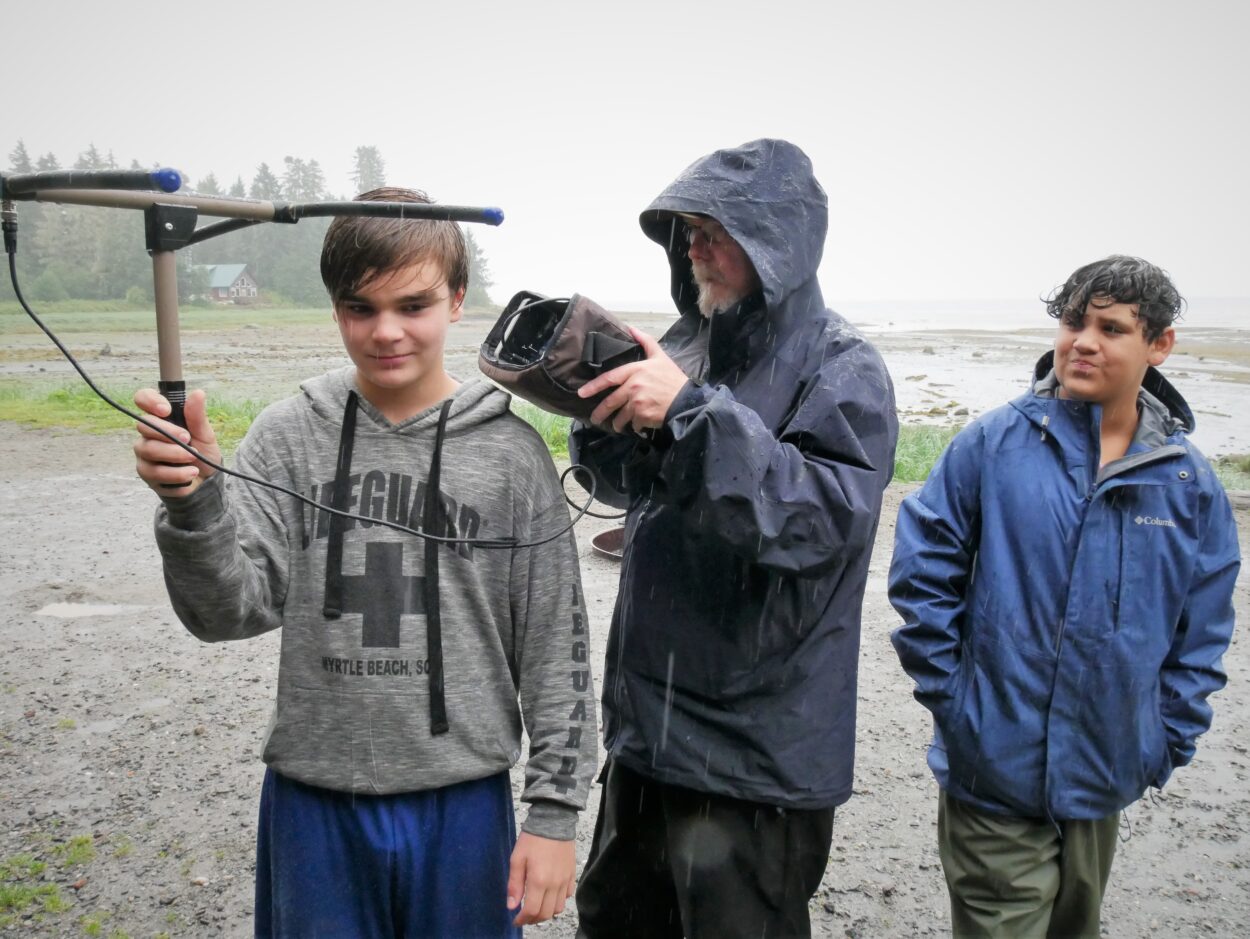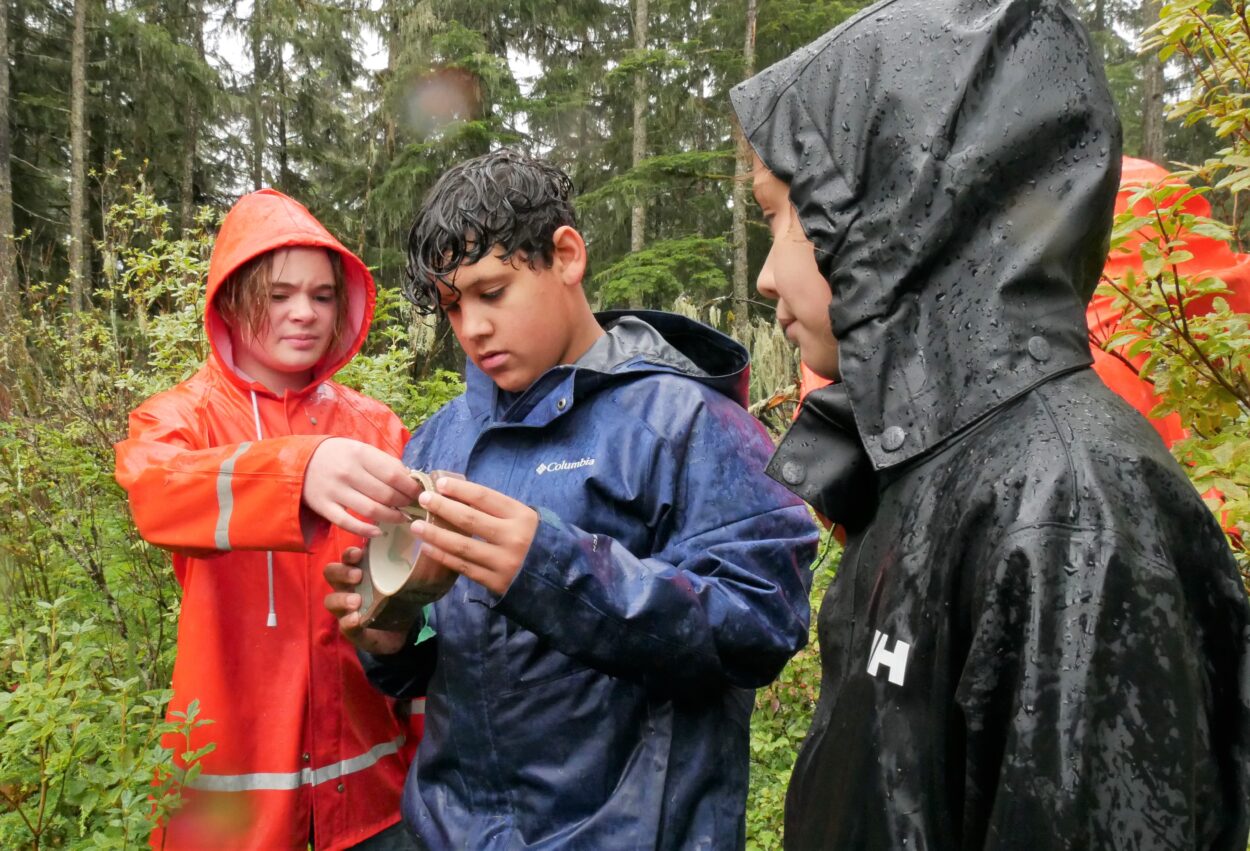
A science camp was held in Petersburg this month for 5th through 7th graders. To learn about a local deer tagging study on Mitkof Island, the kids worked with biologists to locate hidden GPS collars. KFSK’s Angela Denning reports:
Middle school-aged children are gathering around a large handheld antenna with metal arms. One boy holds it above his head and slowly turns in a circle.
“Ok, so this one’s a directional antenna too,” said Dan Eacker, Wildlife Biologist with the Alaska Department of Fish and Game. “As you point it this way it’s going to be loudest when you’re pointing at the signal.”
Eacker’s been conducting a multi-year deer tagging project on Mitkof Island. Today, he along with a few other scientists are showing the students how to find GPS collars they’ve hidden in the woods.
The heavy rain doesn’t seem to bother them. They tromp by dripping-wet fern leaves and salmon berry bushes.
Earlier they learned about the tagging program at a nearby park shelter. It’s the first GPS collar study on Mitkof Island. The collars send a signal to satellites to help the biologists like Eacker track where the deer travel and how well they survive.
“One of the big questions we’re looking at is with all the logging that’s gone on in the past on the island, how do the deer select habitat in relation to those clear cuts and stuff that I’m sure you guys have seen around the island,” said Eacker.
The collars store the animal’s location every two hours and send the location the biologists every other day. That’s how they found out that one of the deer’s they had tagged had been killed last winter by Woodpecker Cove Road.
“I got an email notification at my desk that an animal had died and so the collars have a mortality switch in them that if it stays still for six hours it will send a mortality signal up,” Eacker said.
Area Management Biologist, Frank Robbins, hiked out the next day and found the collar. The deer was gone, evidently eaten by wolves. There were bite marks on the collar. Robbins says tracking deer on Mitkof will give managers a better idea of the local population.
“If there’s a way we can ascertain how many deer had fawns, how many of those fawns survived, and how many of those does had twins,” Robbins said, “which could make a significant shift in the population.”

There’s already been deer collaring studies done on Mitkof and other parts of Southeast–on Prince of Wales and Chichagof Islands—but with older VHF radio technology.
“Has the collar ever gotten too small for the neck? Say the neck got really big, do the deer ever die from it?” asks 11-year-old Emi Anderson.
The answer is “no”. The collars can expand.
So, back to finding the collars in the forest. . .the three collars are found and returned to the biologists.
The collaring program will run on Mitkof Island for two years. That data is being paired with DNA sampling from droppings and game camera images. If it proves effective, the combined method could be used for studies in other parts of Southeast.
The week-long Summer Science Camp was sponsored by the Petersburg Marine Mammal Center, Sea Grant Alaska Marine Advisory Program and the Petersburg Public Library.










